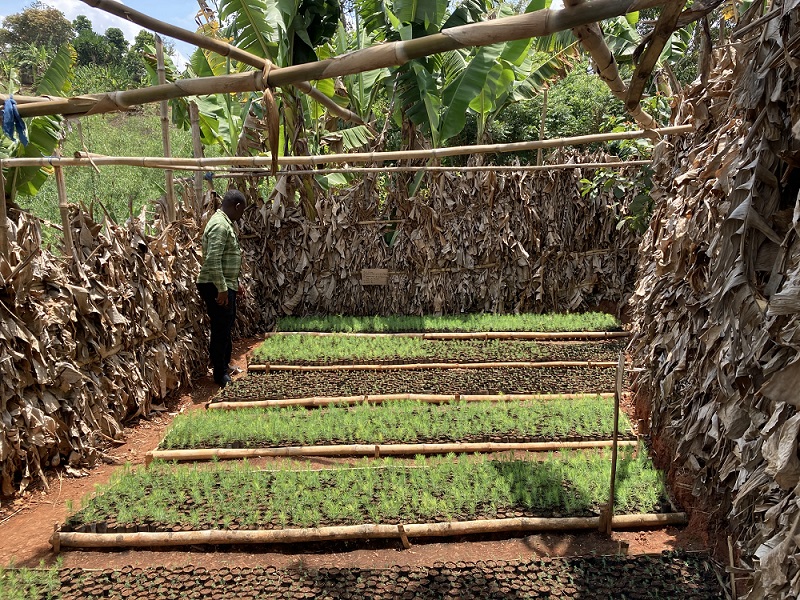Promoting smallholders forestry for environmental conservation and improved rural livelihoods
The Governments of Finland and Tanzania have a long-term collaboration, ‘Participatory Plantation Forestry Program’, which helps to promote sustainable forestry and land use in the Southern Highlands of Tanzania. The Finnish Ambassador Riitta Swan sheds more light on the program which currently is in its second phase.

What is the Plantation Forestry Program, when was it introduced in Tanzania?
The Participatory Plantation Forestry Program (PFP2), previously known as private forestry program (PFP1), is a bilateral development cooperation program between the governments of the United Republic of Tanzania and Finland. Its first phase was introduced in Tanzania in early 2014 and ended in 2019. The second phase, known as Participatory Plantation Forestry Program 2, started in 2019. It will be running until the end of 2023. The program supports the development of the Tanzanian plantation forestry sub-sector, with focus on small-holder forestry and related value chains, in seven districts and three town councils of the Southern Highland regions.
What is the aim of the PFP?
The program aims to promote sustainable and inclusive plantation forestry that contributes to Tanzania’s economic growth and alleviates poverty. To reach this aim, the program seeks to ensure that a socially sensitive, environmentally sustainable, financially profitable plantation forestry sector, including tree growers and micro, Small and Medium Enterprises (MSMEs), as well as their organizations and service providers, exists in the Southern Highlands of Tanzania.
Who are the beneficiaries of the program?
The program support farmers who are willing to engage or engaging in plantation forestry using their own land. Most beneficiaries are smallholder farmers involved in tree farming or plantation establishment and management. Others are vulnerable people involved in primary and secondary wood processing. The associations, such as Tree Growers Associations (TGAs), wood processors’ associations in forestry sector as well as the larger forest companies, are also among the beneficiaries. As one of its activities, the program supports the establishment of the tree growers associations at the village level and builds up their capacity in establishing and managing plantation forests. The programme works in collaboration with the Forestry and Beekeeping Division and the Tanzania Forestry Services Agency which are under the Ministry of Natural Resources and Tourism.

Pic: Tree Growers Associations and representatives of PFP2 programme examining tree plantations (Heini Vihemäki, 2020)
How many hectares of land has been planted under the program up to now?
Since the program started, it has supported the establishment of about 12,000 hectares of pine, eucalyptus and teak plantations that are owned by about 9 000 households in the Southern Highlands of Tanzania. The plantations established or supported belong to the villagers and are established on the villagers’ own lands. Since the second phase started, it has improved skills in the application of best silvicultural practices among the tree plantation owners. As a development cooperation programme, the PFP does not acquire land. Rather it supports sustainable forest investment through facilitating village land use planning that allocates village land to different land-use classes within the village as agreed by the village members. To ensure the security of tenure to villagers involved in tree planting, PFP is facilitating the issuance of Certificate of Customary Right of Occupancy (CCROs) and the National Land-use Planning Commission. The programme does the work in collaboration with the relevant district councils under which the program is run. These are Kilolo, Mufindi, Njombe, Makete, Ludewa, Wanging’ombe and Madaba.
How are the programme activities related with fighting climate change?
As part of best silvicultural practices, the current programme promotes afforestation that increases the carbon sink as the growing trees sequester carbon from the atmosphere. The program also promotes efficient use of land through village land-use planning. In this way it helps maintain also the existing natural forest cover within the designated areas and the carbon stocks of those forests. The changes in the climate, combined with the often unsustainable agricultural practices, have affected crop productivity of agricultural lands in many sites in Tanzania. Thus, tree growing and the development of the forestry value chains can give the smallholder farmers alternative income sources to farming and thus offer a means of adaptation to climate change.
What challenges do you face and how do you overcome them?
Adaptation of best silvicultural practices – such as weeding, pruning and thinning, and preparation of firebreaks - remains a challenge as some of these are rather time demanding. Farmers tend to allocate more time to attending to their food crops than their woodlots. Low infrastructure development in many of the rural areas makes most of the farmers' plantations not easily accessible. This affects their access to extension services, access to markets and hence lower the quality and pricing of their wood products. Access to the latest and most efficient technology to small and medium enterprises involved in the sawmilling business is also limited. This is due to a number of things such as low awareness and availability of the technology, their low capital capacity, inaccessibility to finance from lending institutions. To overcome some of the financial challenges of micro and SMEs, PFP has facilitated savings and loans schemes. PFP also supports business administration systems of Small and Medium Enterprises (SMEs) to help them to better access loans.
Text:
William Nambiza,
Coordinator, Natural resources
Heini Vihemäki
Counsellor, Natural resources

